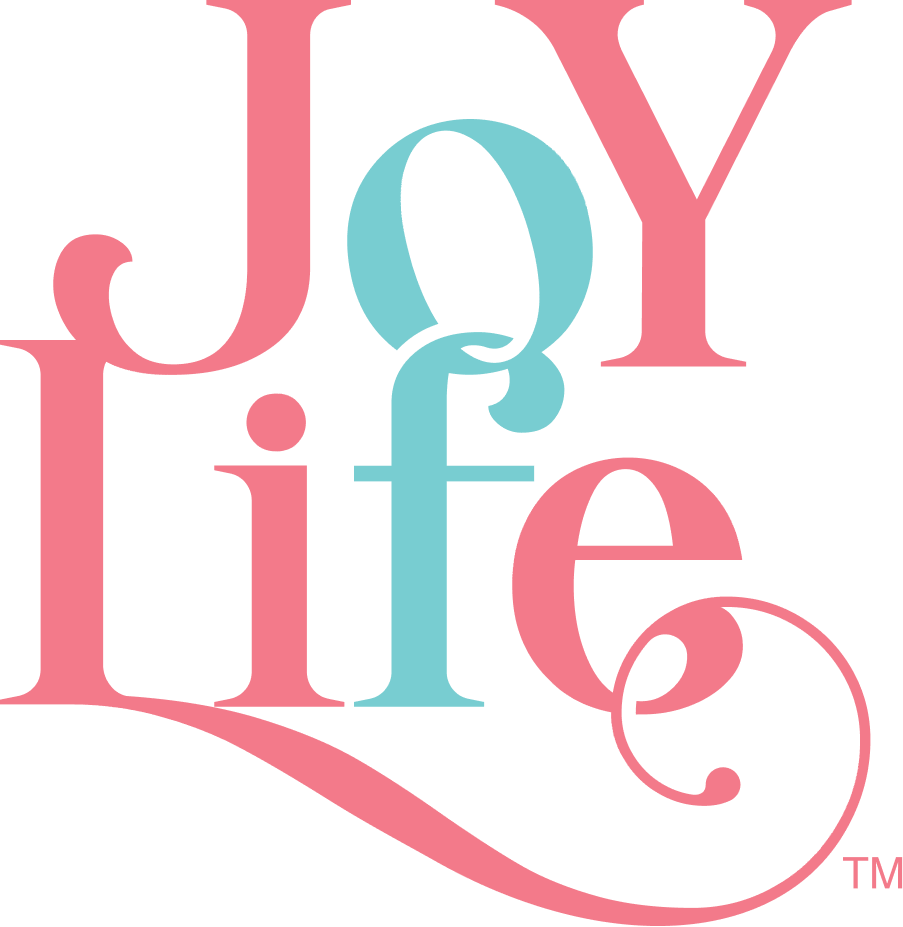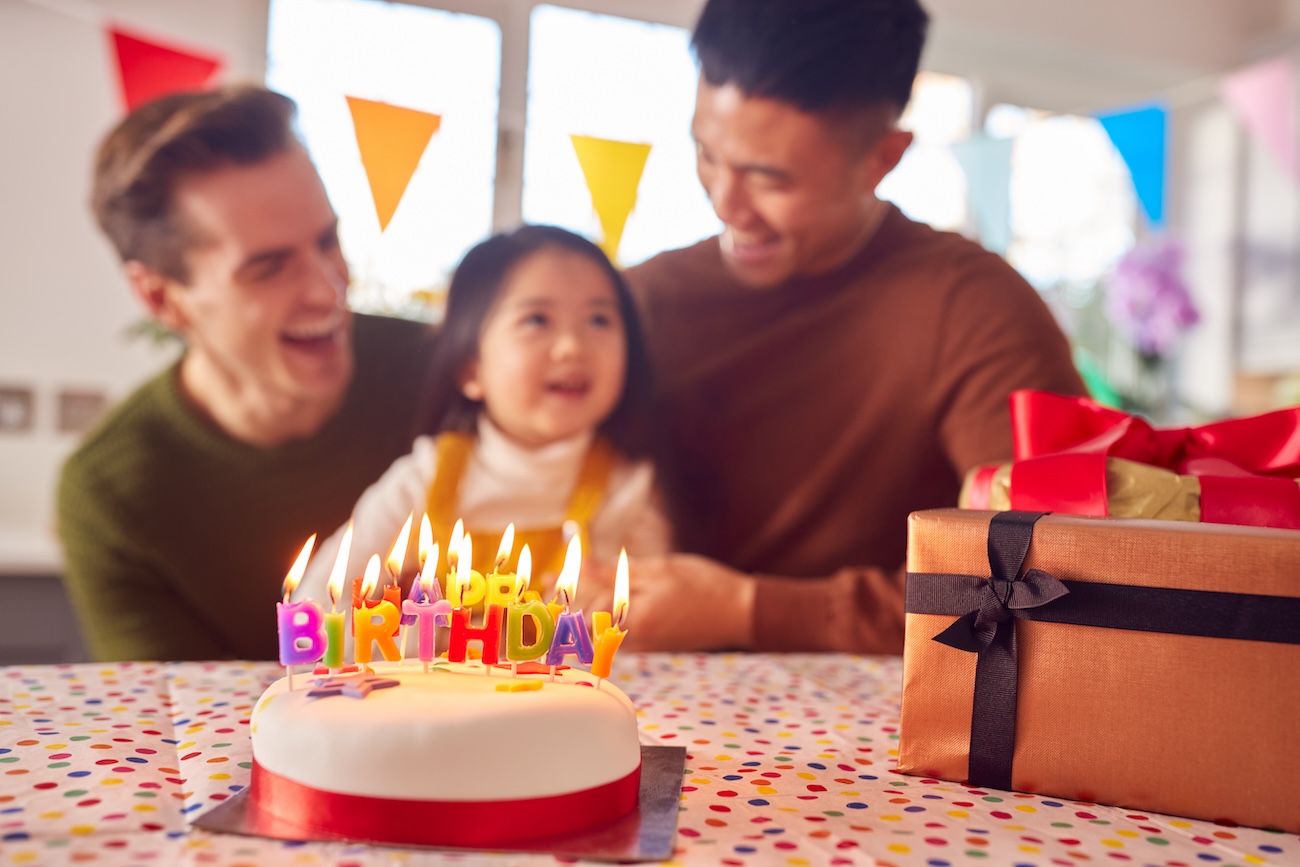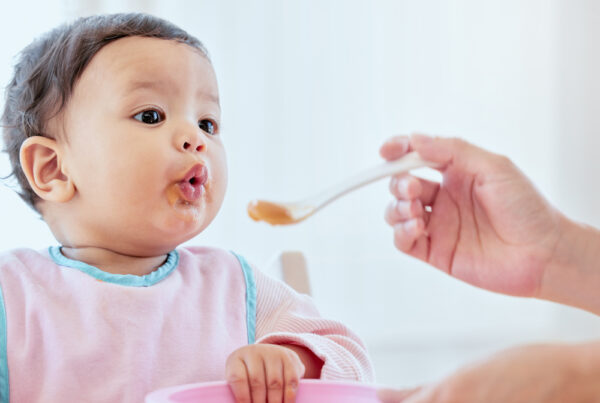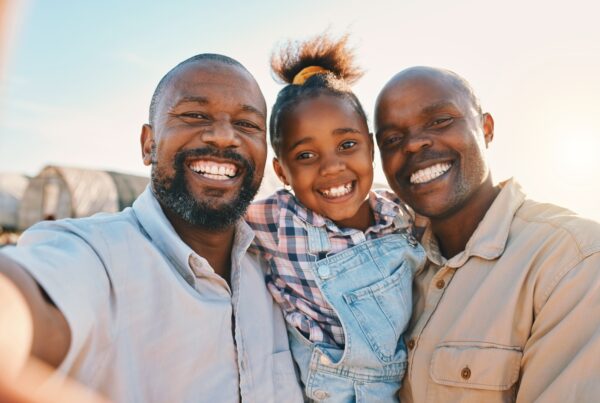Gift-giving can be a source of joy or anxiety. While receiving presents might be a highlight for many during the holidays, birthdays, and special events, selecting the perfect gift often proves challenging—even when the recipient is well-known to the giver. Concerns over meeting expectations can overshadow the act of giving.
When choosing gifts for children with LGBTQ+ parents, the search for the right present can feel even more daunting. The aim is not just to delight but to contribute meaningfully to the child’s growth and long-term enjoyment, especially in the context of same-sex households.
Before delving into gift ideas, it’s important to understand the environment these children are raised in and the stages of their development.
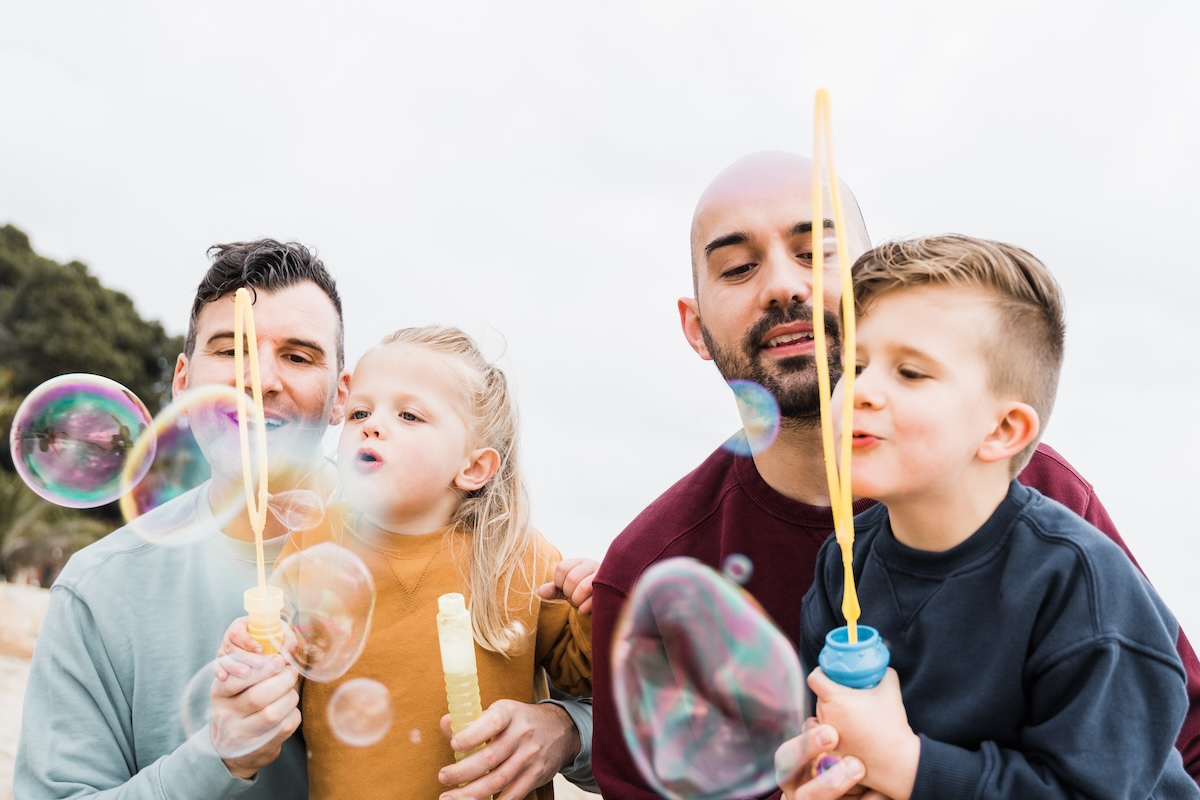
Characteristics of Kids in Same-Sex Households
Globally, the number of same-sex households is on the rise. As LGBTQ+ individuals continue to advocate for their rights, avenues like surrogacy have become more accessible, allowing these couples to fulfill their parenting dreams. Organizations like Joy of Life® Surrogacy provide comprehensive support, guiding prospective parents through costs, legalities, and the surrogacy journey itself.
Children in LGBTQ+ homes are often the product of a deliberate and desired process, be it through adoption or surrogacy. This intentional parenting frequently results in children who are open-minded, tolerant, and empathetic, having been exposed to diverse family structures from an early age.
The 5 Stages of Child Development
Children progress through developmental stages regardless of their household structure:
- Newborn (0-2 months) – Newborns begin to interact with their environment through movement and reactions to sounds and sights.
- Infant (3-12 months) – Infants develop social smiles, recognize people, and gradually gain motor skills, from grabbing to sitting and eventually crawling.
- Toddler (1-3 years) – Toddlers achieve major milestones like walking, talking, and following instructions.
- Preschool (3-5 years) – This stage is marked by enhanced motor skills, self-care, and more complex speech.
- School-age (6-17 years) – Children grow more independent, forming their own opinions and refining their social, emotional, and cognitive skills.
Gift Ideas for Kids With LGBTQ+ Parents
When picking out gifts for children with LGBTQ+ parents, consider options that are not only enjoyable but also support development and inclusivity. Here’s an enriched selection that resonates with these criteria:
Pride-Inspired Playthings
Look for sensory toys like rainbow stacking rings, vibrant play mats, and colorful mobiles that nod to the pride flag. These items not only celebrate LGBTQ+ culture but also stimulate visual and tactile senses, encouraging the child’s understanding of colors and shapes.
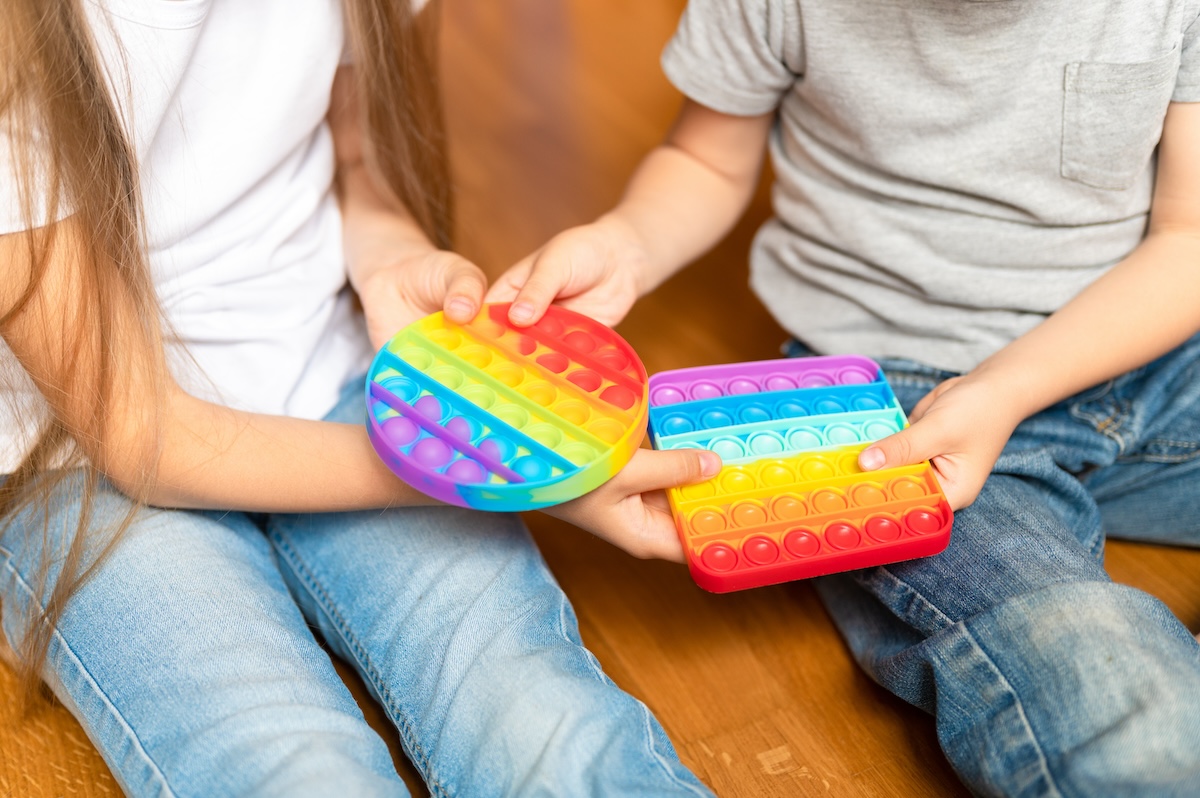
LGBTQ+-Friendly Reading
Build a library of children’s books that reflect the diversity of family structures. Titles such as “And Tango Makes Three,” “Stella Brings the Family,” and “Prince & Knight” offer narratives of inclusivity and acceptance, while also fostering a love for reading.
Personalized Apparel
Custom-made clothing with affirming messages like “Love Makes a Family” or “All Families Are Special” on t-shirts, hats, or bibs can make a child feel unique and celebrated. This gesture not only warms the heart but also promotes a message of love and inclusivity in the child’s everyday life.
Creative and Educational Toys
Choose interactive toys like building blocks with diverse family figures, mechanical puzzles that enhance problem-solving skills, and art supplies that encourage self-expression and fine motor skill development.
Movement-Encouraging Toys
Push-pull toys like wagons adorned with rainbow patterns or animal figures not only foster gross motor skills but also inspire active play and imagination. These toys can help children with balance and coordination while also acknowledging the vibrancy of their family’s community.
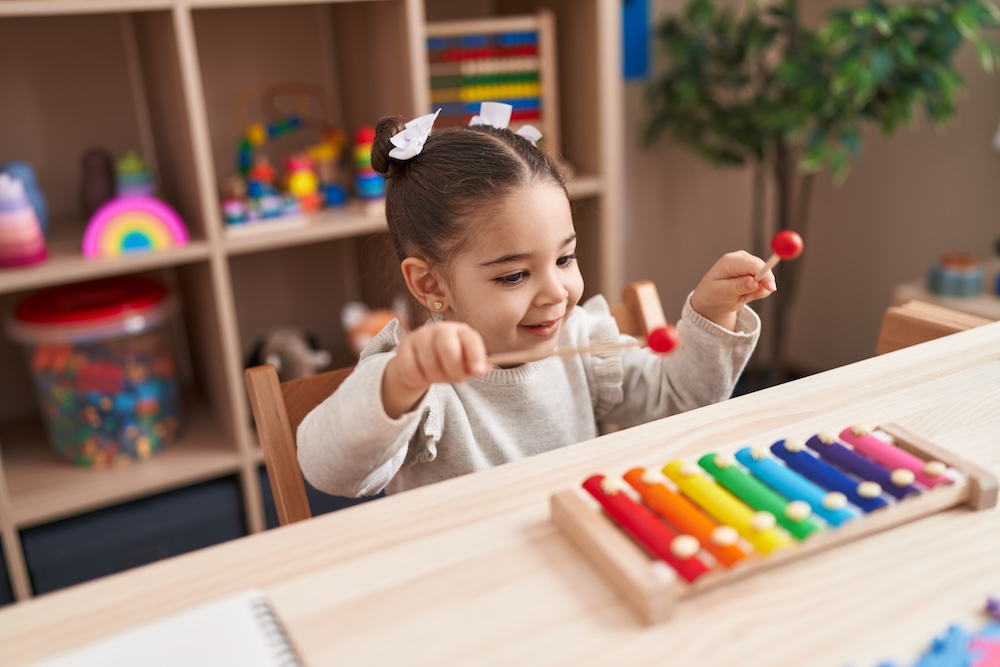
Musical Instruments
Introduce instruments designed for little hands, such as mini keyboards, toy drums, or simple wind instruments. These gifts can have a profound effect on a child’s auditory development and may also serve as an early introduction to the joys of music and rhythm.
Puzzles for Every Stage
Offer puzzles appropriate for different ages—from simple wooden puzzles for toddlers to more complex jigsaws for older children. Puzzles are instrumental in enhancing cognitive skills, hand-eye coordination, and problem-solving abilities. They can also be a quiet, focused activity that children enjoy independently or with their parents.
Science and Exploration Kits
For older children, science kits or nature exploration sets can be a wonderful gift, sparking curiosity about the world and teaching them about various scientific concepts through hands-on experiments and observations.
Board Games and Card Games
Games that can be played as a family not only provide hours of fun but also teach children about teamwork, strategy, and fair play. Look for games that cater to various age groups and can involve multiple players so that everyone in the family can participate.
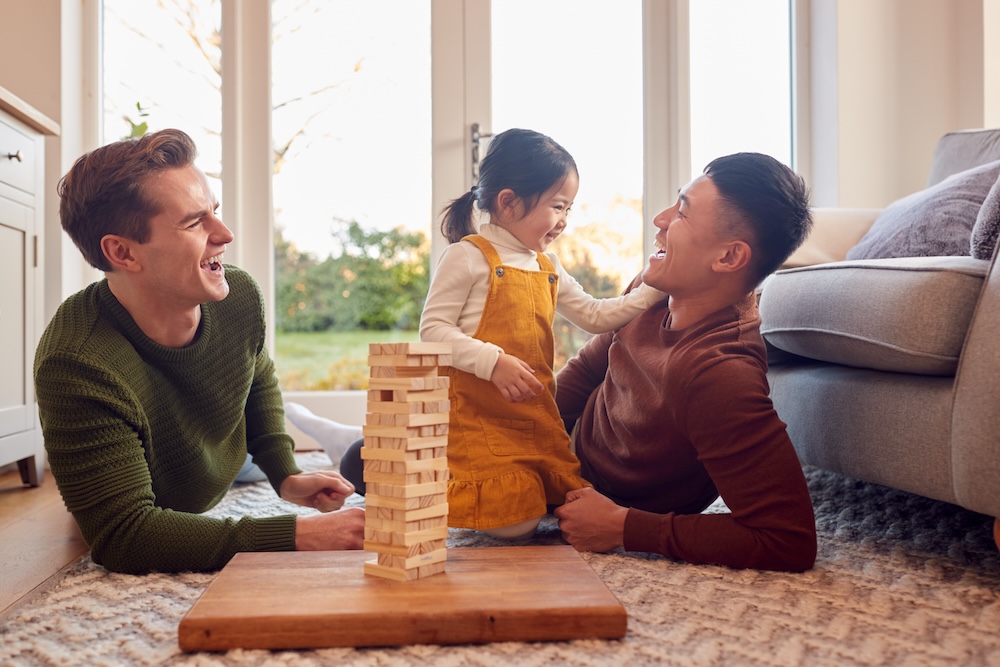
When selecting a gift, consider the child’s age, interests, and the values of their family. A well-chosen present can be a powerful tool for learning, growth, and affirmation of a child’s identity within their family structure.
Interested in furthering the conversation about diverse family dynamics and the role of surrogacy in LGBTQ+ parenting? Connect with Joy of Life® Surrogacy to explore the possibilities and empower your journey to parenthood with expert guidance and support.
